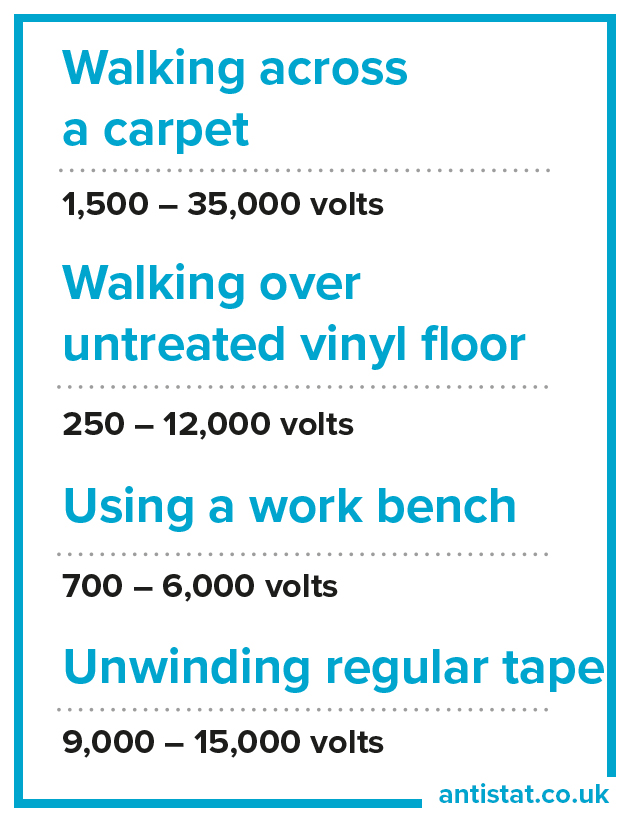Static Discharge – The Science behind Static Electricity & ESD
Static discharge is created when two surfaces come into contact and separate; electrons move to the other surface, causing an imbalance. The amount of static electricity that you feel when a charge is discharged depends upon many factors…
Such as the materials on contact or separation, friction, the surface area of contact or separation and relative humidity are contributory factors. However, at a lower relative humidity where the environment is drier, charge generation and build-up will increase significantly.
Without any indication, everyday movements will generate these static charges, only when a static charge reaches around 2,000 volts will you feel the resulting shock, below we cover some of the issues behind static discharge.
Component damage – The hidden danger
Feeling the discharge of static is as unpleasant as it is short-lived, however, less than 100 volts is enough to potentially damage a critical electronic component. That is why operators and technicians who work with ESD sensitive components or equipment are required to use appropriate protection when entering a designated ESD protected area or workstation.
Understanding the effects of ESD and its impact is just as important as the products designed to prevent it. Should these preventable charges come into contact with electronic components, the results are often impossible with the human eye. Without microscopes, this level of damage, no matter how small, leads to expensive repairs and downtime further along the supply chain.
Electrostatic discharge (ESD) as low as 2,000 volts can often go un-noticed when transferred from a non-grounded person to a circuit board. If the static damage is not initially detected, it may be further down the supply chain before unexpected delays, and the repairs are costly for something that could have been entirely preventable.
Items on a workbench or static controlled area can often be overlooked when it comes to ESD. Take conventional stationery for example; ring binders, document wallets or clipboards can often be made from materials that naturally insulate static charges, potentially releasing charges that are in proximity to electronic parts or people, Antistat stock hundred’s of consumables to control or arrest
What can you do to prevent it?
Ensuring you have the correct grounding products such as heel grounders, workstation kits, bonding plugs that are attached to mats and gloves are essential in preventing further damage due to static discharges. We sell everything from Disposable Heel Grounders, which use the conductive yarn in the antistatic fabric to create and maintain contact between the ground and body, optimising static dissipation – to Bonding Plugs, which help is designed to connect matting, wrist straps or equipment to a common grounding point to ensure any static charges are dissipated safely. We also stock entire Workstation Kits, comprehensive, easy to install, basic ESD Workstation Kit including blue matting, signage, bonding plugs, wrist strap and leads.
Get Static discharge advice from the experts
If you need to control static charges, we have a wide range of products designed to prevent this from occurring. You can contact our sales team either by live chat at the bottom of the screen or by phone on +44 (0) 1473 836 200 where a member of our team will be more than happy to discuss a solution.
Looking to order Antistatic products in the US?



